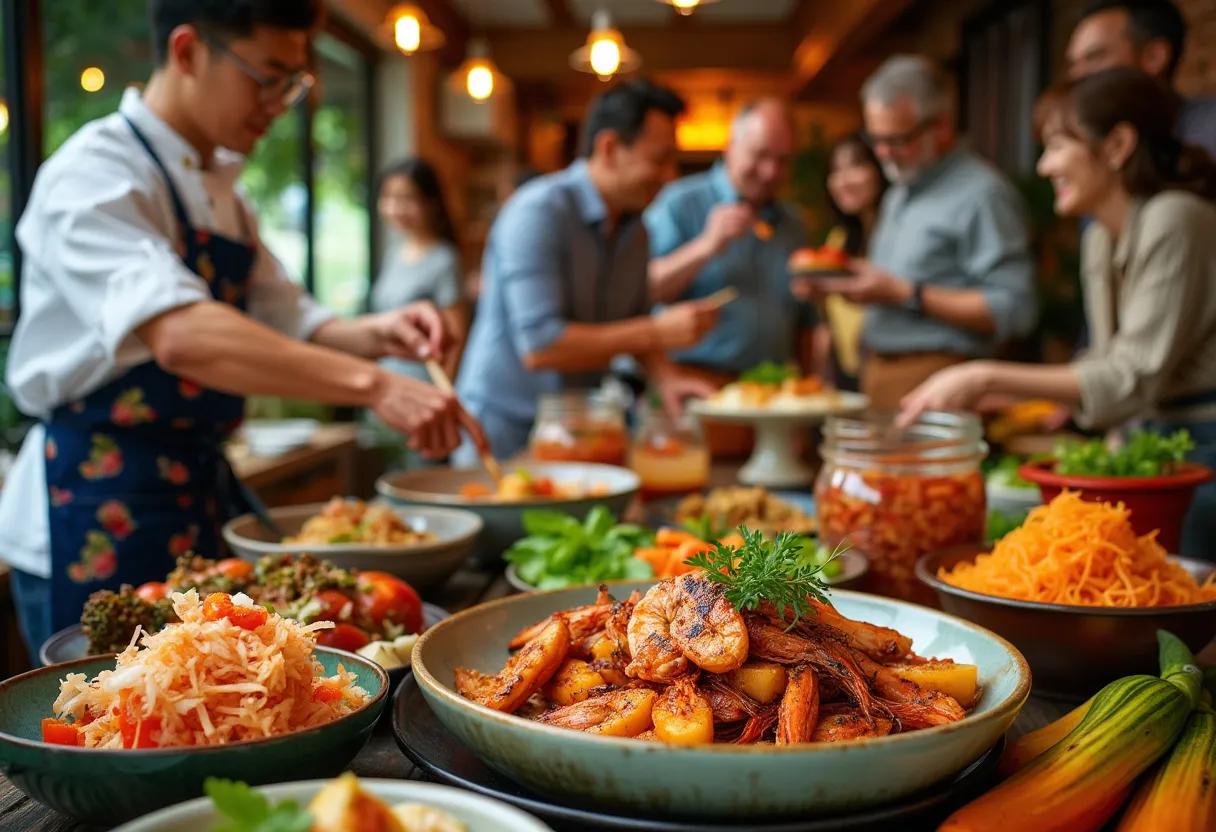
Unlocking the Secrets of Korean-Australian Fusion Cuisine: Tips from a Homegrown Chef
Published on 9/21/2024
David Kim • 9/21/2024
As a chef who has spent years blending the bold and vibrant flavors of Korean cooking with the fresh and eclectic components of Australian cuisine, I've discovered the beauty that lies in fusion. This culinary journey began in the heart of Sydney, within my family-owned Korean BBQ restaurant. It was here that I unearthed the potential of creating dishes that not only bring two diverse cultures together but also resonate with the family-friendly ethos I hold dear.
The Heart of Fusion Cooking
At its core, fusion cuisine is about embracing diversity while maintaining a harmonious balance of flavors and textures. This involves playing with the ingredients and techniques that define each culinary tradition and discovering new ways to marry them. For me, Korean-Australian fusion is a celebration of bold spices, fresh produce, and the creativity that comes from merging these distinctive styles.
Balance and Boldness
The secret to successful fusion lies in understanding the basic principles of both cuisines. Korean dishes are known for their spicy, savory flavors, thanks to staples like gochujang and kimchi. These can be beautifully paired with the light, fresh flavors of Australian produce—think fresh seafood or bright, seasonal vegetables. It's about achieving the right balance, allowing the signature elements from both cultures to shine without one overpowering the other.
Understanding Key Ingredients
- Gochujang: A fermented red chili paste that is spicy, sweet, and savory. This is a staple in Korean cooking and adds a unique depth to dishes.
- Kimchi: Fermented vegetables, most commonly cabbage, that bring a tangy, spicy bite to any meal.
- Wagyu beef: Although originating from Japan, Australia produces some incredible wagyu that offers rich, buttery flavors that complement Korean marinades perfectly.
- Barramundi: A popular Australian fish that pairs well with Korean spices and flavors.
Culinary Techniques to Embrace
While ingredients lay the groundwork, the fusion magic happens with the techniques. In my journey, I've found that using a grill—like those often found in barbecue—infuses a smoky essence that ties everything together. Adapting Korean fermentation techniques can also elevate the simplest Australian ingredients into something phenomenal.
Inspiration from Family and Community
My family has been my greatest source of inspiration. Watching my children enjoy the blend of Korean and Australian flavors reaffirms the versatility and joyous nature of this style of cooking. It's this same joy that I aim to share in my cooking workshops around Sydney, teaching others the art of Korean-Australian fusion and encouraging them to experiment with their pallets.
Final Thoughts
In essence, Korean-Australian fusion is about crafting something new from the familiar, building bridges between cultures, and connecting people through food. It's a journey of taste that's ever-evolving and one that urges you to take risks and savor the unexpected results.
By embracing the characteristics of both Korean and Australian cuisines, and understanding how to blend them harmoniously, you'll uncover a world of flavors that's as diverse as it is delicious.
David Kim
Chef and Family Recipe Developer | I've been cooking
David was born in Seoul, South Korea, but moved to Sydney, Australia, with his family when he was a teenager. His parents opened a small Korean BBQ restaurant, where David developed a love for the fusion of Korean and Australian cuisines. Over the years, David has mastered the art of blending the bold, spicy flavors of Korean cooking with the fresh, vibrant ingredients of Australia. Now married with three children, David focuses on creating family-friendly, fusion recipes that are quick, easy, and delicious. He also hosts cooking workshops in Sydney to teach Korean-Australian fusion cooking.